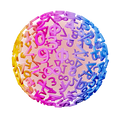What Does Median Mean?
Video Crash Courses
Want to watch animated videos and solve interactive exercises about median?
Click here to try Video Crash Courses called “Mean, Median, Mode”!
The median is a measure of central central tendency that represents the observation or observations that are in the middle of the data set. The median is a good key measurement when the data set has extreme values, because their effect on the result is not amplified.
The median is the value of the middle observation or observations when the values are sorted in ascending or descending order.
Rule
To Find the Median
-
Sort the numbers in order.
-
When you have one number in the middle, this is the median. This happens when the number of observations is an odd number.
-
When you have two numbers in the middle, you have to add them together and divide their sum by two. The answer you get is the median. This happens when the number of observations is an even number.

Example 1
You asked eleven students in your class how many pennies they have in their pocket. The result was:
First, sort the numbers in ascending order:
The median was 20 in Example 1. So there are just as many kids who have fewer than 20 pennies in their pocket as there are kids who have more than 20 pennies.
In the example, there were 11 observations, which is an odd number. When you find the median of an odd number, there is always one number in the middle—in the case of this example, there are five numbers to either side of 20. If you had 10 observations, which is an even number, there would be two numbers in the middle. In that case, to find the median, you would add the two numbers in the middle and then divide their sum by 2.
Example 2
You ask 10 more students in your class about how many pennies they have, and get these numbers:
You sort the numbers in ascending order
The median is 10.
Note! 10 isn’t a value that came up at all, but that’s okay! When you have an even number of data points, sometimes the median value ends up being a number that isn’t in the list.





















